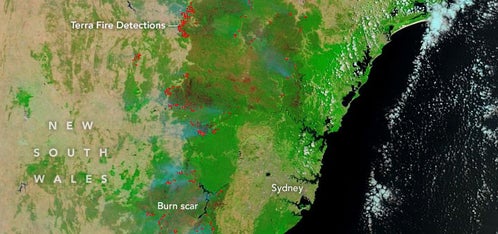Seeing the Parts for the Whole
Terra satellite with MOPITT instrument
Twenty years ago today [December 18, 2019], NASA began a new era in the study of Earth. The Terra satellite, flagship of the agency’s Earth Observing System (EOS), was launched into space from Vandenberg Air Force Base on December 18, 1999. It was built to last for six years and 30,000 orbits. It is still flying and taking data at the end of 2019.
See also:
Nova Scotia scientist celebrates 20th year of atmospheric monitoring project
Former MOPITT Principle Investigator John Gille (and many other ACOM staff) know Jim Drummond formerly of Dalhousie University in Nova Scotia, Canada. ACOM continues to work closely on MOPITT with the Dalhousie Department of Physics and Atmospheric Science. When NCAR and Dalhousie discussed the original experiment, they agreed that John Gille and NCAR colleagues would develop the software to invert the measured radiances that Jim's instrument would produce. It was a very smooth working partnership, later evolving into NCAR doing the data processing (with NASA funding) that has kept the MOPITT team busy since 1988.
Read more at NASA Earth Observatory . . .
